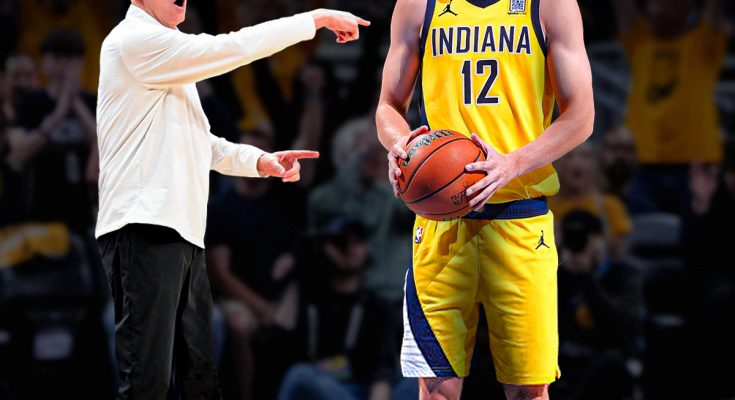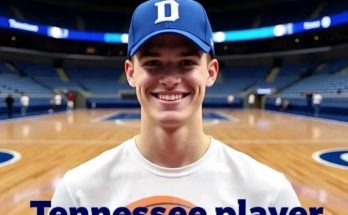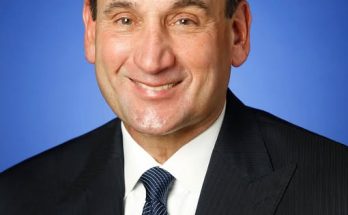The Indiana Pacers’ unexpected journey to the NBA Finals last season was one of the most thrilling storylines in recent basketball history. Entering the postseason as underdogs, the team defied expectations and navigated through a gauntlet of elite competition, showcasing a mix of grit, cohesion, and determination that surprised both fans and analysts alike. Their Finals appearance wasn’t just a flash in the pan; it was the result of a well-constructed roster, excellent coaching, and the emergence of key players stepping up at critical moments. Yet now, as the team looks toward the upcoming season, they face a daunting challenge that could define their future trajectory: replacing the dynamic presence of Tyrese Haliburton and maintaining the depth that was crucial to their success.
Haliburton’s impact on the Pacers cannot be overstated. As one of the league’s most promising young guards, his ability to orchestrate the offense, create opportunities for teammates, and contribute efficiently on both ends of the floor made him an indispensable piece. His departure leaves a significant void, not just statistically, but also in terms of leadership, floor management, and the intangible qualities that helped keep the Pacers competitive in close games. Filling that void requires more than just plugging in a replacement; it demands a strategic recalibration of the team’s identity, rotations, and game plan.
At the core of the Pacers’ challenge is the need to find a new floor general who can replicate—or at least approximate—Haliburton’s versatility and vision. The guard’s ability to operate both as a primary ball-handler and off the ball created mismatches and opened lanes for shooters and slashers alike. Without him, the Pacers must determine whether to promote from within or seek external options. Players like Malcolm Brogdon, who has experience running an offense and a strong all-around game, might take on a larger share of the playmaking duties. His veteran savvy and scoring ability could provide a steady hand, but whether he can fully replace Haliburton’s combination of youth, energy, and creation remains uncertain.
Beyond Brogdon, younger players on the roster may need to develop more rapidly. The Pacers have a promising core that includes versatile wings and forwards capable of contributing in multiple facets, but they may need to elevate their roles and consistency to fill the gap left by their former star guard. This situation presents an opportunity for growth but also carries risks if the team cannot find the right balance or if key contributors struggle to adjust to increased responsibilities.
Additionally, the Pacers’ depth was a crucial factor in their Finals run. The ability to deploy multiple players who could sustain pressure on both offense and defense allowed them to withstand the rigors of a long playoff push. Losing Haliburton means losing not just a key starter but also a catalyst for the second unit when rotations tightened. Maintaining depth means either developing bench players who can step up or acquiring new talent that fits seamlessly into the system.
This brings the team’s management and coaching staff into sharp focus. The front office must be creative in constructing a roster that complements the existing core while addressing the glaring need for backcourt playmaking. Whether through the draft, trades, or free agency, acquiring pieces that fit the Pacers’ style and culture is paramount. Meanwhile, the coaching staff faces the task of reworking offensive sets and defensive schemes to account for the personnel changes. Adjustments will be necessary, and the ability to adapt quickly will influence how competitive the team remains.
The loss of Haliburton also affects the team’s defensive identity. Known for his length, quickness, and anticipation, he was a key defender who often guarded multiple positions and disrupted opposing offenses. His absence means the Pacers will need to rely more heavily on collective defensive effort, with players stepping up to cover different roles. This may require changes in defensive rotations, help strategies, and communication on the court to prevent opponents from exploiting mismatches.
Another dimension to consider is the psychological and emotional impact of losing such a significant player. The Pacers experienced the exhilaration of a deep playoff run fueled in part by Haliburton’s presence and performances. Transitioning from that high point to a period of uncertainty can be challenging. Maintaining team morale, confidence, and cohesion will be critical as they navigate this new chapter. Leadership from veterans and coaches will play an important role in fostering a resilient mindset and a culture that embraces the challenge rather than shies away from it.
In terms of offensive production, the Pacers may also need to diversify their scoring options. Haliburton’s ability to both create for others and score efficiently himself was a cornerstone of their attack. Without him, the burden to generate points will fall more heavily on other stars and role players. Players like Buddy Hield, who is a proven shooter, and Myles Turner, who can stretch the floor and protect the rim, must continue to perform at high levels while others develop. The emergence of secondary scorers will be vital to prevent defenses from focusing on one or two main threats.
The transition period also offers a chance for the Pacers to redefine their style of play. While they excelled last season with a balanced, unselfish approach, the roster change could prompt a shift toward a more fast-paced, aggressive offense or a defense-first mentality depending on the strengths of the new personnel. Flexibility in adapting the team’s identity could be a significant advantage in the ever-evolving landscape of the NBA.
The timing of this transition is another factor. Coming off a Finals appearance, expectations among fans and media may be elevated, putting additional pressure on the team to sustain success. However, realistic assessment acknowledges that rebuilding or retooling around a new core takes time. Patience from stakeholders, combined with a clear vision from management, will be important to avoid knee-jerk reactions that could disrupt long-term development.
Moreover, the Pacers’ frontcourt composition remains an asset. Players like Turner and potentially emerging forwards can anchor the paint on both ends, providing rim protection and rebounding. This foundation allows the team to build around solid interior defense while seeking perimeter stability to replace Haliburton’s multifaceted skill set.
Looking at the bigger picture, the Pacers are at a crossroads that many successful teams face after a breakthrough season. The path forward requires a delicate blend of continuity and innovation—retaining the core principles that brought them success while embracing necessary changes to compensate for a key loss. How they manage this transition will influence not only their immediate performance but also their trajectory in the coming years.
The balance between veteran experience and youthful energy will be crucial. Players who have tasted postseason success bring valuable insight and composure, but integrating young talent who can grow into larger roles is essential for sustainable competitiveness. This dynamic creates opportunities for mentorship within the locker room and the development of a cohesive team identity.
From a strategic standpoint, the Pacers might explore new offensive sets that emphasize ball movement and spacing, allowing different players to shine in playmaking roles. Defensively, increased emphasis on team schemes and communication can mitigate the absence of a versatile defender like Haliburton. The coaching staff’s ability to innovate and maximize the available talent will be tested in this process.
In conclusion, the Indiana Pacers’ remarkable Finals run last season was a testament to their resilience, teamwork, and skill, with Tyrese Haliburton playing a central role in their success. As they face the challenge of replacing his presence and maintaining the depth that propelled them to the league’s highest stage, the team stands at a pivotal moment. The task ahead involves not only finding a new on-court leader and adjusting roles across the roster but also sustaining the culture and competitive spirit that defined their recent achievements. How effectively the Pacers navigate this transition will shape their identity and competitiveness for seasons to come, making this a defining period in the franchise’s journey.



